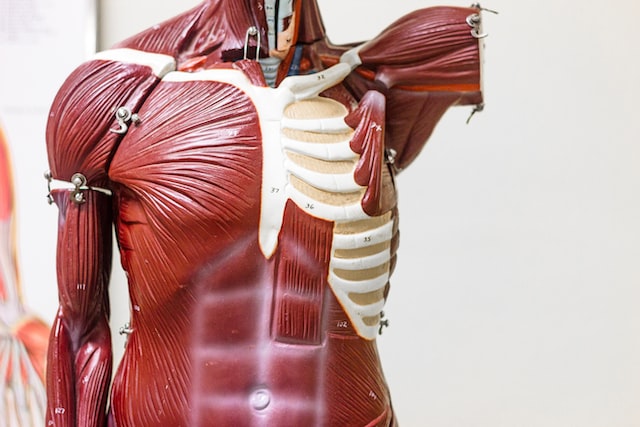Using Flashcards to Study Anatomy: A Comprehensive Guide for Medical Students
Admin - March 6, 2023

As a medical student, studying anatomy can be both exciting and overwhelming. You're tasked with learning the names, functions, and locations of various body parts, which can feel like a daunting task. Fortunately, flashcards can be a great tool to help you study anatomy. In this comprehensive guide, we'll go over everything you need to know about using flashcards to study anatomy.
Creating Your Flashcards
The benefit of creating your own flashcards is that it is, in itself, a way to study. You get the chance to go over the terms and topics as you create them.
What makes a good flashcard?
Let's talk about what makes a good flashcard. A good flashcard should have a clear and concise question or prompt on one side, and a complete and accurate answer on the other side. You don't want to overwhelm yourself with too much information on one card, so keep it simple and to the point.
Now that you know what makes a good flashcard, let's dive into some specific examples and study techniques.
Example 1: Bones of the Human Body
Question: What are the bones that make up the forearm?
Answer: Ulna and radius.
Example 2: Muscles of the Leg
Question: What muscle is responsible for dorsiflexion of the foot?
Answer: The tibialis anterior.
Example 3: Organs of the Digestive System
Question: What organ secretes bile?
Answer: The liver.
As you create your flashcards, make sure to include both anatomical names and common names for body parts. This will help you recognize and understand the language used in the medical field.
Use Images
Images are a powerful tool that can greatly enhance the effectiveness of flashcards for studying anatomy. Visual aids can help you better understand the structure and function of different body parts, making it easier to remember the information. Here are some different examples of how images can be used in flashcards:
- Anatomy diagrams: These are used to illustrate the location and relationship of different body parts. For example, a diagram of the respiratory system can show the pathways of air through the lungs, making it easier to understand the function of each part.
- X-rays and CT scans: Images from X-rays and CT scans can be used to help students identify different bones and organs. For example, a flashcard with an X-ray of a hand can help students identify the different bones and joints in the hand.
- Medical illustrations: These help visualize different physiological processes. For example, a flashcard with an illustration of the process of muscle contraction can help students understand the sequence of events that occur during muscle movement.
- Image as a mnemonic: An image as a mnemonic can help you associate the anatomy term with its function and/or location.
Shameless plug: Add images to your Flashcards with Flashcard Lab, a Google Sheets add-on that allows you to customize the study material to your liking, is simple and easy to use. No need to learn any other software if you know Google Sheets. Try it out for free (mobile app too).
Online Resources to Supplement Your Own Flashcards
In addition to creating your own flashcards, there are also many resources available online and in print. Here are some websites and physical study cards that can be helpful:
- Netter's Anatomy Flash Cards: This set of flashcards features illustrations by the renowned medical artist Frank H. Netter. The cards are organized by body system and include clear and concise information.
- Gray's Anatomy for Students Flash Cards: These flashcards are based on the popular textbook Gray's Anatomy for Students. They feature high-quality illustrations and information that is easy to understand.
- AnatomyZone: This website and YouTube channel that offers a variety of free anatomy tutorials, including videos and quizzes, that cover topics such as bones, muscles, and organs.
- Kenhub: Kenhub is an online learning platform that offers comprehensive anatomy courses and quizzes, as well as a customizable flashcard feature.
- Visible Body: Visible Body is a 3D anatomy app that allows you to explore and manipulate the human body in a virtual environment. It also features quizzes and a customizable flashcard feature.
Study Techniques
When it comes to studying with flashcards, there are a few techniques that can be helpful. Here are some of our favorites:
- Spaced repetition: Instead of studying all of your flashcards at once, spread out your study sessions over several days. This will help you retain the information better.
- Shuffle your deck: Don't study your flashcards in the same order every time. Shuffle them around so that you're forced to think about the answers in a different way.
- Use different formats: Instead of just reading the question and answer, try writing out the answer, saying it out loud, or drawing a diagram.
- Study with a partner: Studying with a partner can help you stay motivated and engaged. Quiz each other on your flashcards and explain concepts to each other.
---------------------------------------------------------------
Flashcards can be a great tool for studying anatomy as a medical student. By creating your own flashcards, using online and print resources, and incorporating different study techniques, you can master the intricacies of the human body. So grab a stack of index cards and get to work – your future patients will thank you!